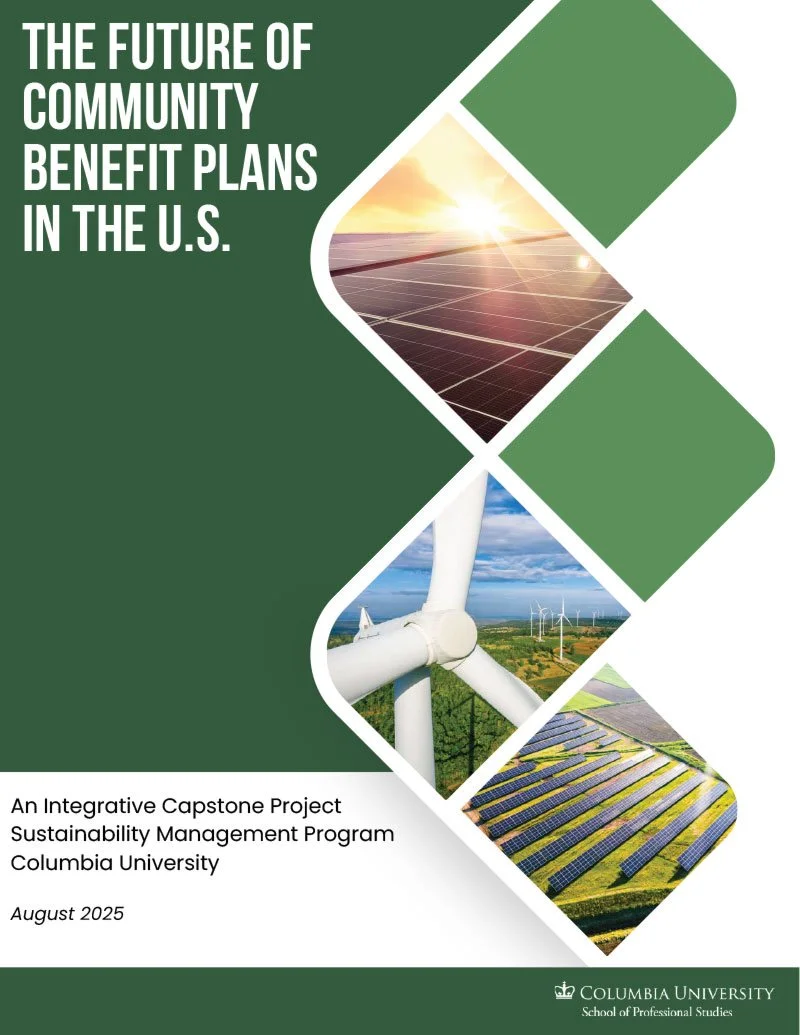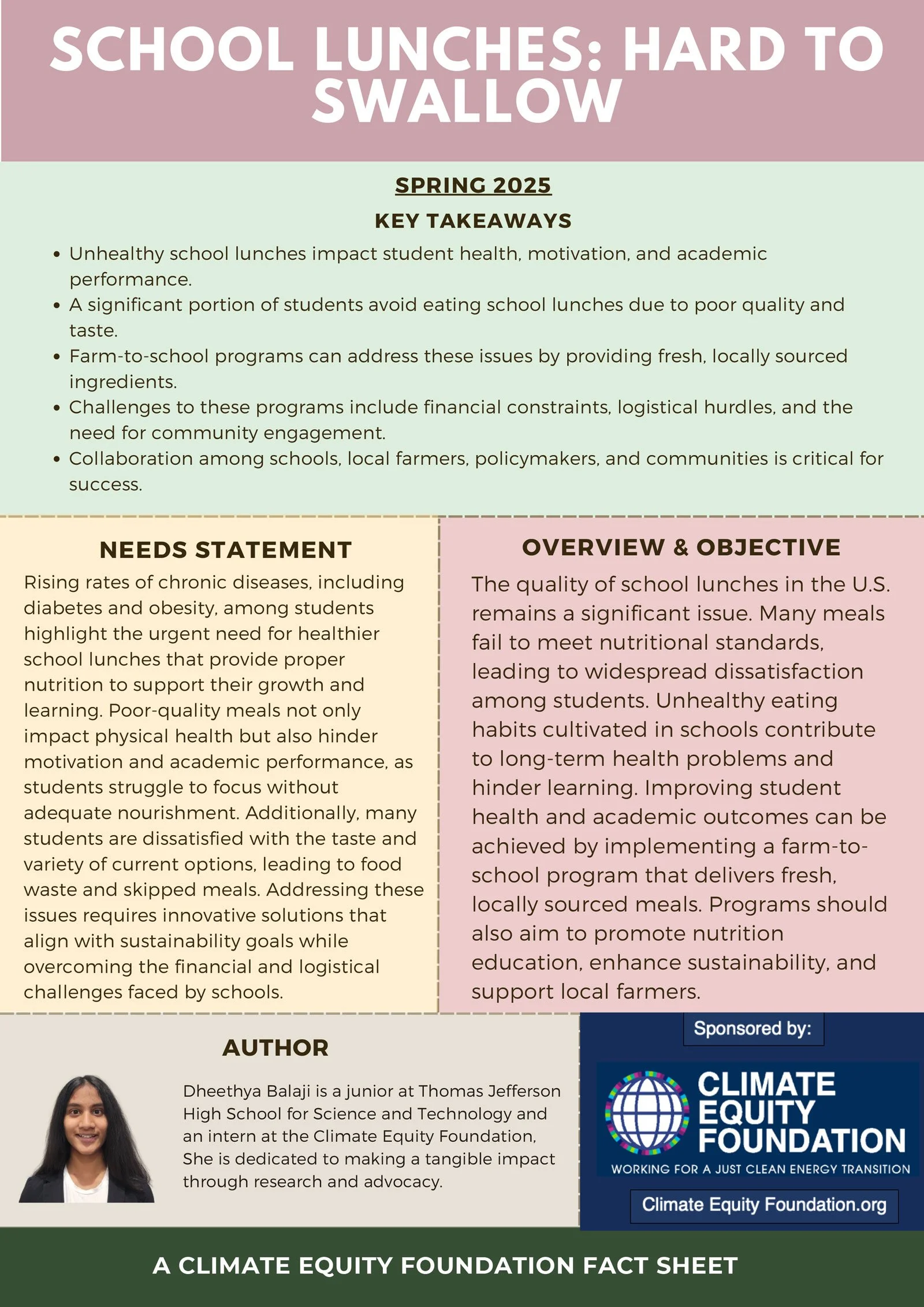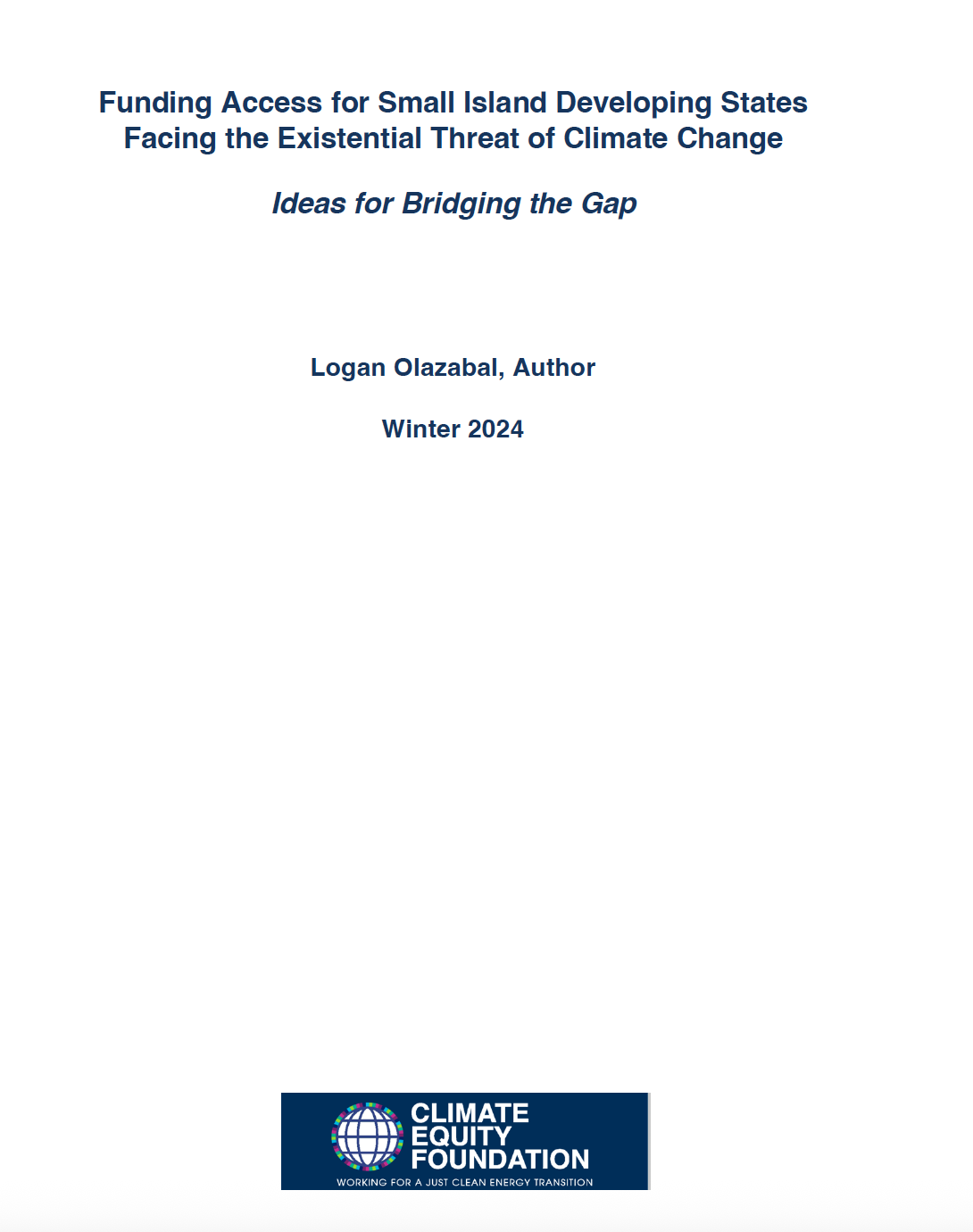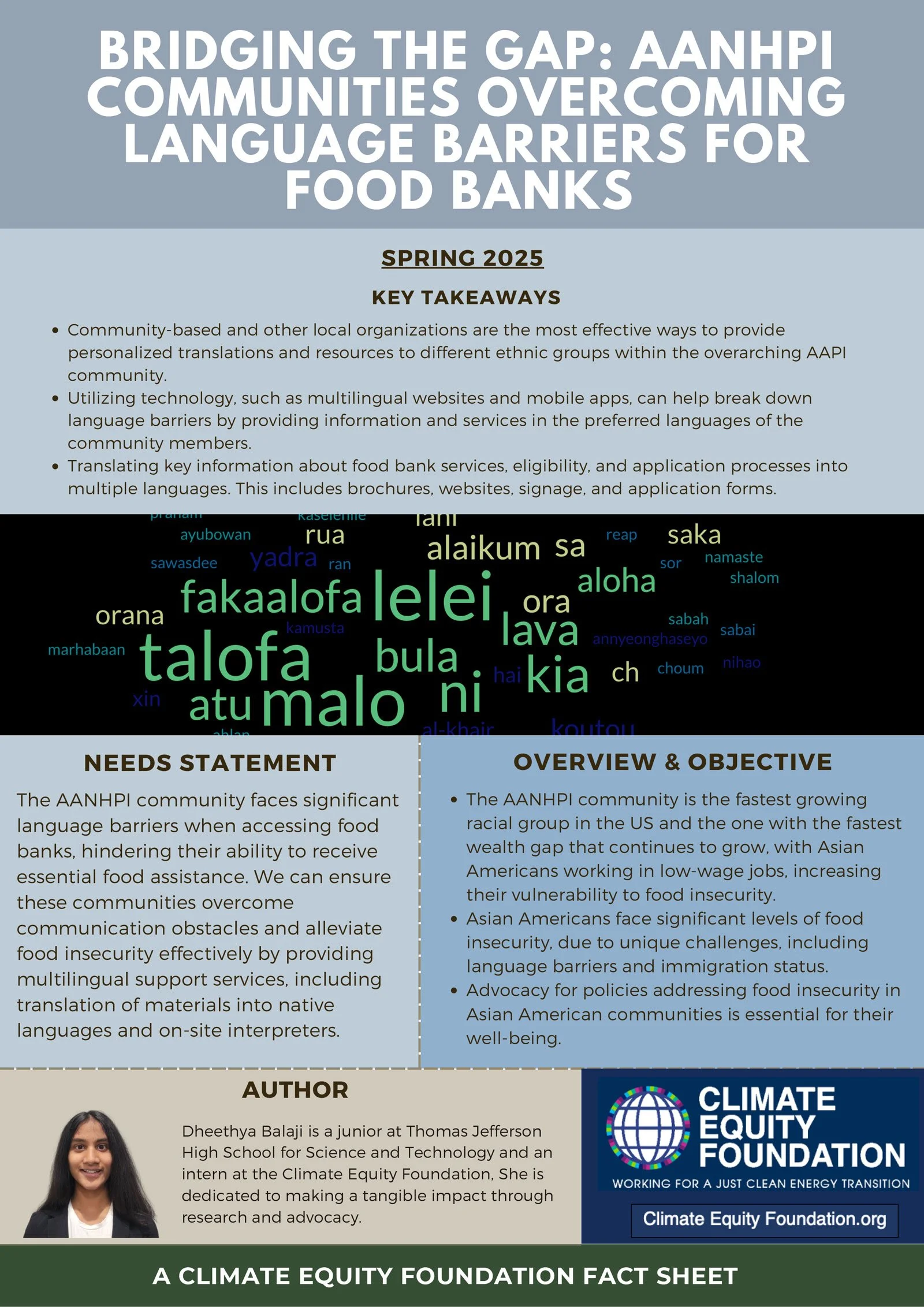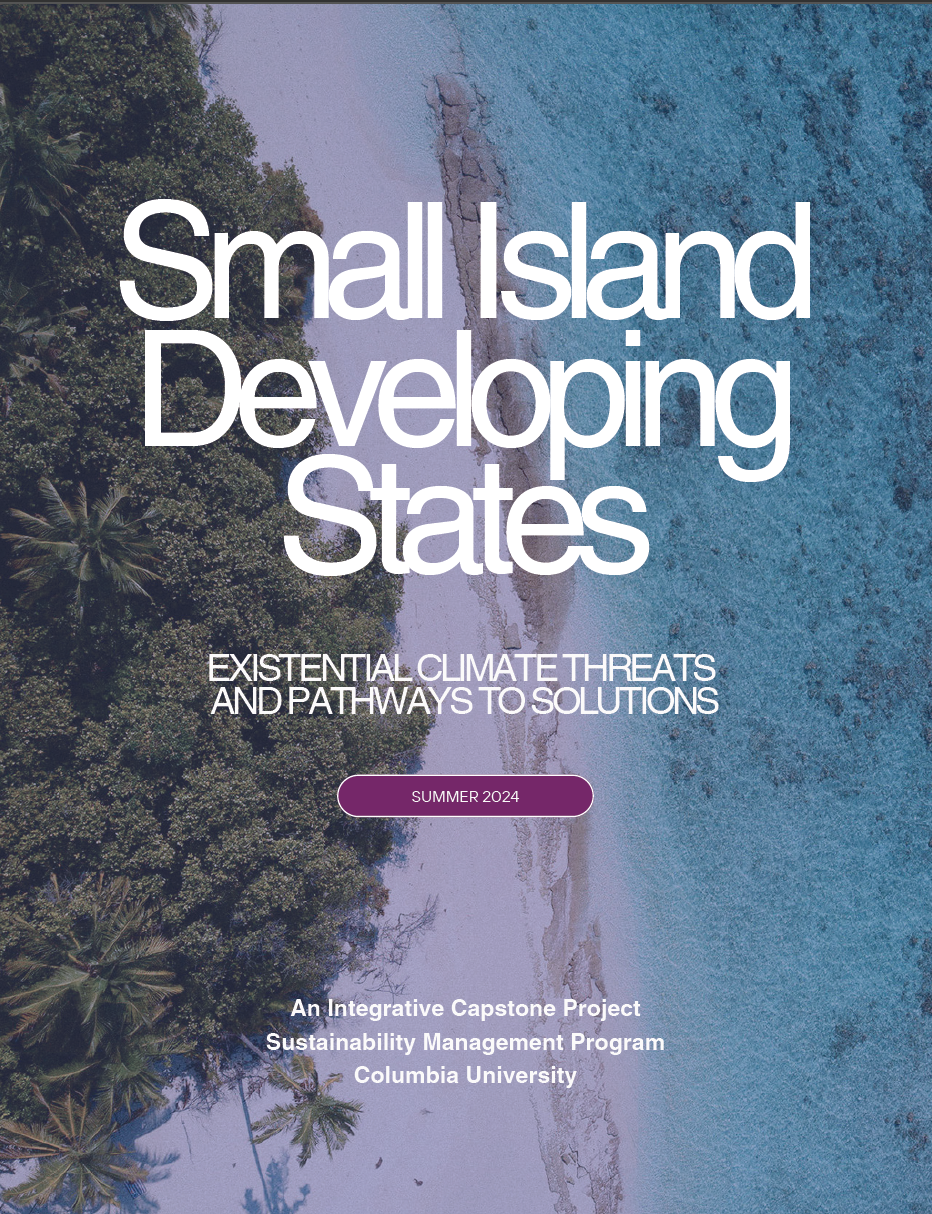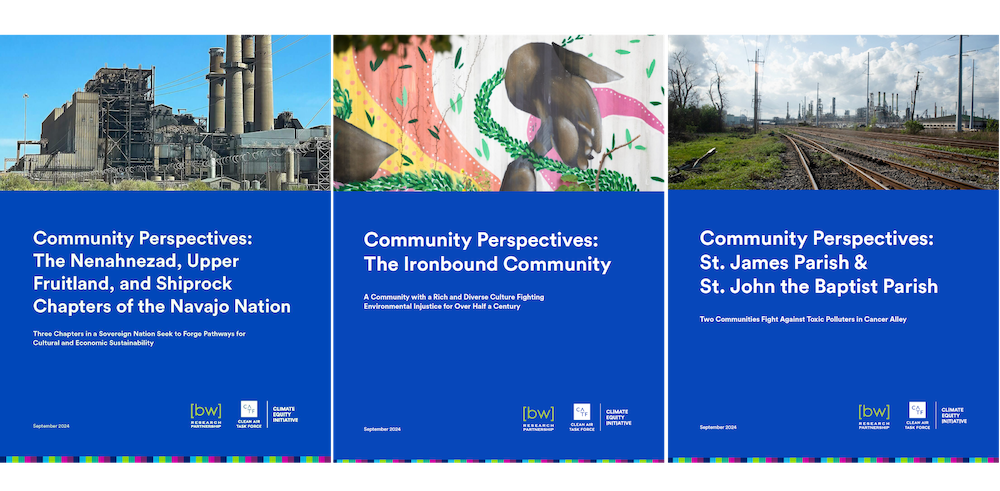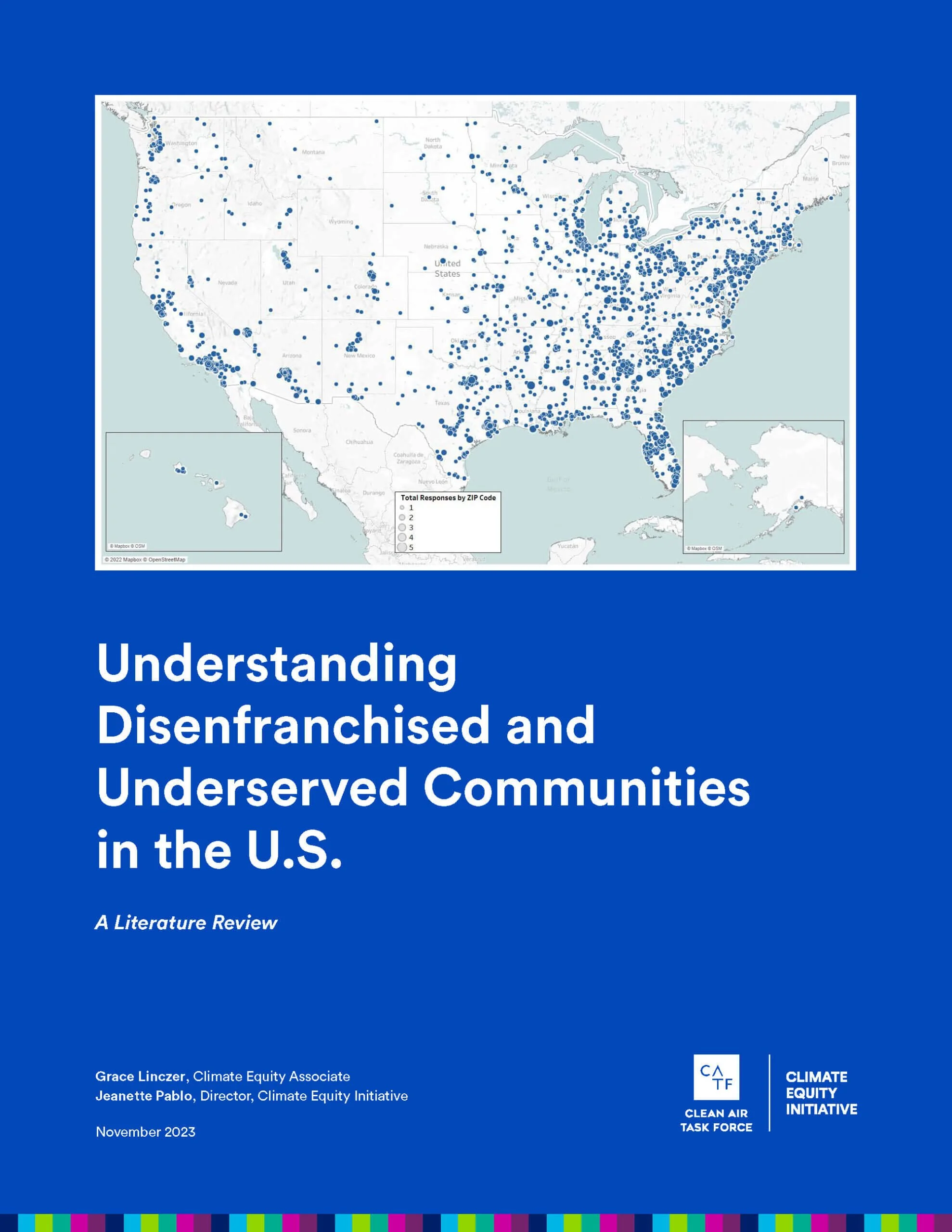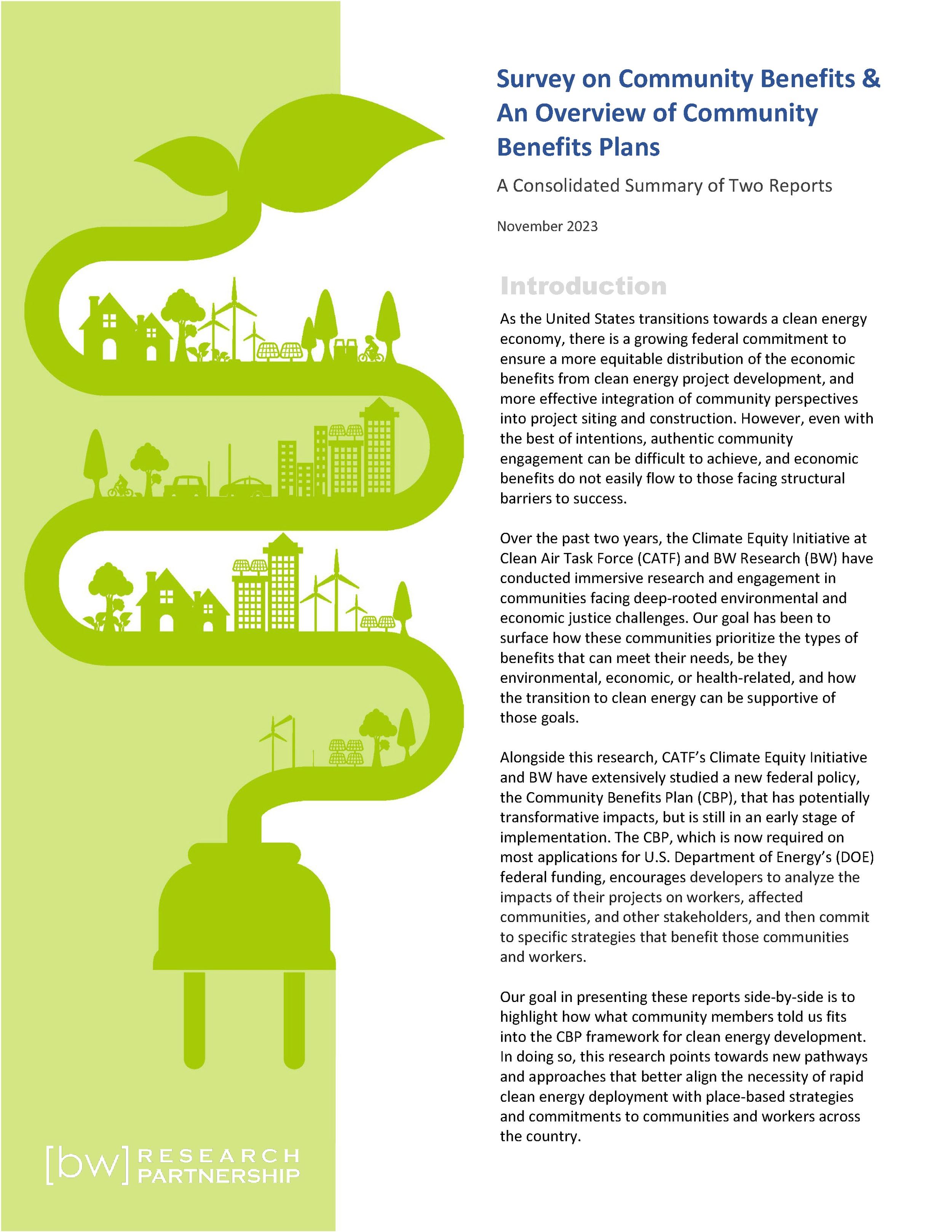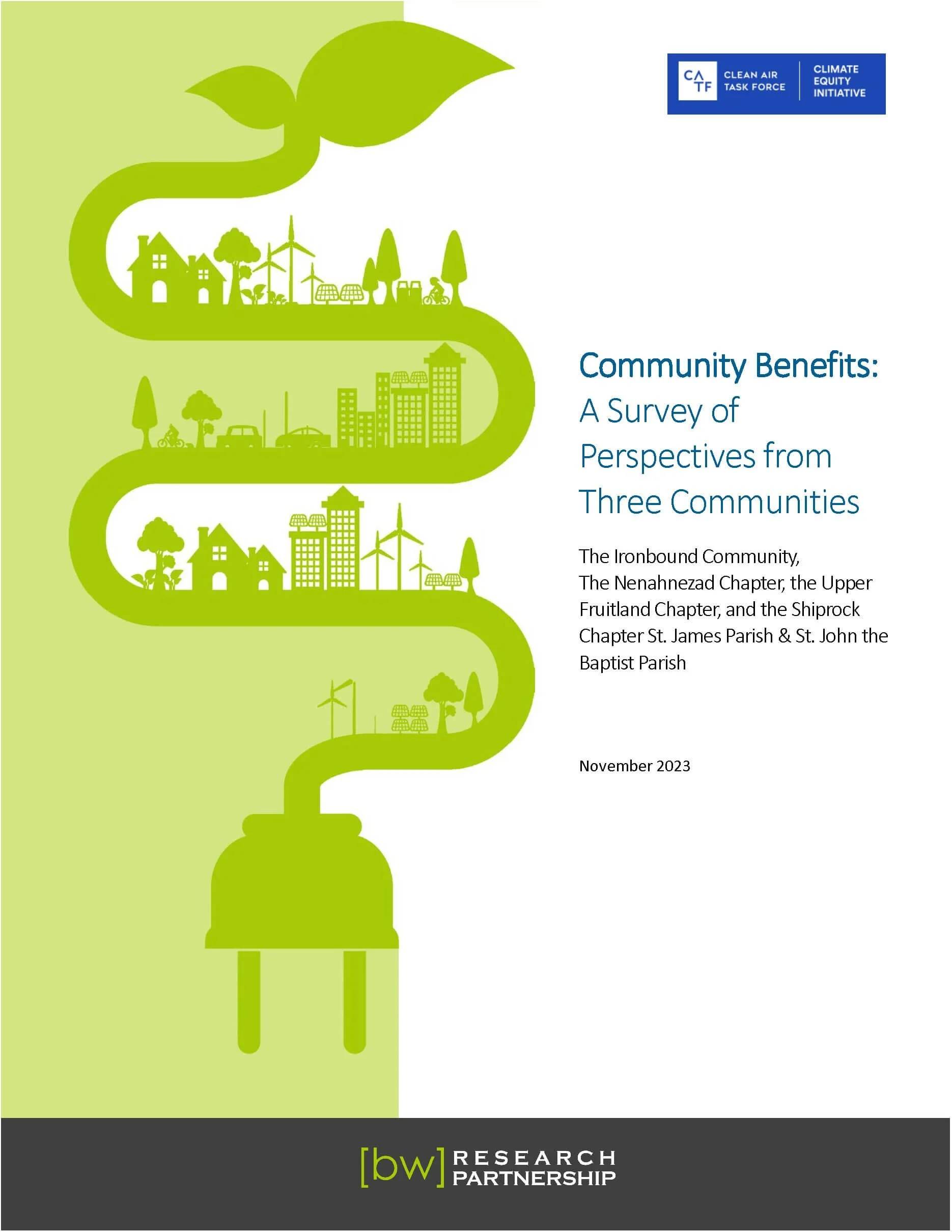Reports
The Climate Equity Foundation supports research and often partners with others to produce new and relevant knowledge. Please find our reports below.
An Integrative Capstone Project of the Sustainability Management Program at Columbia University
The clean energy transition offers a rare chance to address historic inequities in energy development, but only if it is implemented in ways that share benefits fairly, build trust, and treat communities as genuine partners. This report examines how Community Benefit Plans (CBPs) can serve as a bridge between developers and historically marginalized communities, drawing on case studies, stakeholder interviews, and policy analysis to highlight effective strategies and common pitfalls.
The Future of Community Benefit Plans in the U.S.
Columbia University | August 2025
Building Better Carbon Capture Projects: Stakeholder Insights on Engagement, Trust & Efficacy — An Integrative Capstone Project, Sustainability Management Program
As the world looks for solutions to combat climate change and provide equitable energy to all, Carbon Capture, Utilization, and Storage (CCUS) has gained traction as a potential solution. However, many stakeholders are noting the risks associated with CCUS, including health hazards and the unfair distribution of benefits amongst local communities, especially environmental justice communities. This report examines the intersection of CCUS and environmental justice by assessing how various stakeholders and communities are affected, and whether inclusive, community-informed pathways can enable more equitable outcomes. Download the report or Download the presentation
School Lunches: Hard to Swallow
Rising rates of chronic diseases, including diabetes and obesity, among students highlight the urgent need for healthier school lunches that provide proper nutrition to support their growth and learning. Poor-quality meals not only impact physical health but also hinder motivation and academic performance, as students struggle to focus without adequate nourishment. Additionally, many students are dissatisfied with the taste and variety of current options, leading to food waste and skipped meals. Addressing these issues requires innovative solutions that align with sustainability goals while overcoming the financial and logistical challenges faced by schools. Download the fact sheet
About the Author: Dheethya Balaji is a junior at Thomas Jefferson High School for Science and Technology and an intern at the Climate Equity Foundation. She is dedicated to making a tangible impact through research and advocacy.
Funding Access for Small Island Developing States Facing the Existential Threat of Climate Change — Ideas for Bridging the Gap
This report outlines the current landscape of available financial resources and proposes pragmatic solutions to enhance the efficiency of funding access. Recommendations include:
establishing greater transparency in financial reporting,
ensuring adequate funding levels,
developing distribution criteria rooted in vulnerability assessments, and
strengthening capacity for project proposal submissions.
By fostering international collaboration and support, we can pave the way for a sustainable future for these vulnerable states, ensuring their needs and voices are integral to the global climate response strategy. Download the full report
About the Author: Logan Olazabal is a student at Columbia University, where he is a John W. Kluge Scholar majoring in Financial Economics with a concentration in Sustainable Development. As a passionate advocate for social and environmental change, Logan enjoys work in sustainable finance, nonprofit leadership, and impactful investment analysis.
Bridging the Gap: AANHPI Communities Overcoming Language Barriers for Food Banks
The Asian American Native Hawaiian and Pacific Islander community faces significant language barriers when accessing food banks, hindering their ability to receive essential food assistance. We can ensure these communities overcome communication obstacles and alleviate food insecurity effectively by providing multilingual support services, including translation of materials into native languages and on-site interpreters. Download the fact sheet
About the Author: Dheethya Balaji is a junior at Thomas Jefferson High School for Science and Technology and an intern at the Climate Equity Foundation. She is dedicated to making a tangible impact through research and advocacy.
Small Island Developing States: Existential Climate Threats and Pathways to Solutions, Columbia University | 2024
Small Island Developing States (SIDS) are among the most vulnerable countries to climate change, facing threats such as sea level rise, extreme weather events, and coastal erosion. This paper focuses on five SIDS countries: Fiji, Tuvalu, Kiribati, Maldives, and Guyana. Through the development of country profiles documenting key information related to economics, population, infrastructure, policies, and the environment, this paper proposes additional potential solutions related to shared challenges identified amongst the five case studies. Read the report
Community Perspectives
Between 2021 and 2023, the Climate Equity Initiative at Clean Air Task Force (CATF), in collaboration with BW Research Partnership and Equnival Partners, conducted research and community engagement in six communities:
the Nenahnezad Chapter, Upper Fruitland Chapter, and Shiprock Chapter of the Navajo Nation (read the report);
the Ironbound community in Newark, New Jersey (read the report); and
St. James Parish and St. John the Baptist Parish in Louisiana (read the report).
By learning from each of these communities, the ambition of this research is to help inform policies and actions designed to reverse historic and systemic injustice and achieve our social, environmental, and climate goals. This research underscores the importance of inclusive, community-driven approaches and policy frameworks that address these challenges and support the community’s rights for a sustainable and equitable future.
The research is based on series of focus groups, interviews, street engagement, local observation, meetings, and dinners in each community. In addition, we analyzed local economic indicators and a survey to learn what types of community benefits matter most to residents.
Perspectives from Environmental Justice Communities: A National Survey
CATF commissioned BW Research Partnership to conduct a national survey of residents of environmental justice communities, based on self-declared race, ethnicity, and income.
The purpose of this national survey and report was to gain greater understanding of community perceptions regarding environmental justice and climate equity issues. Read the report and watch the webinar.
Understanding Disenfranchised and Underserved Communities in the U.S.
This paper provides a broad overview of the challenges facing disenfranchised and underserved communities today, reflecting upon the compounding effects of inequity and the multifaceted nature of environmental risk.
While it is important to engage each community with regard to their unique challenges and history, this analysis demonstrates that the most salient issues facing disenfranchised and underserved populations today are those which threaten health, economic well-being, and overall prosperity. Any efforts to move towards a just, decarbonized economy must account for the real concerns of disenfranchised and underserved communities. Watch the webinar.
Consolidated Summary: Survey on Community Benefits and an Overview of Community Benefits Plans and Agreements
Since 2021, the Climate Equity Initiative at Clean Air Task Force and BW Research have conducted immersive research and engagement in communities facing deep-rooted environmental and economic justice challenges. Our goal has been to surface how these communities prioritize the types of benefits that can meet their needs and how the transition to clean energy can be supportive of those goals.
Alongside this research, CATF’s Climate Equity Initiative and BW have extensively studied a new federal policy, the Community Benefits Plan (CBP), that has potentially transformative impacts, but is still in an early stage of implementation. Our goal in presenting these reports side-by-side is to highlight how what community members told us fits into the CBP framework for clean energy development. In doing so, this research points towards new pathways and approaches that better align the necessity of rapid clean energy deployment with place-based strategies and commitments to communities. Watch the webinar.
Understanding Community Benefits Plans at the Department of Energy and Their Potential for Impact
The Community Benefits Plan (CBP) process is a first-of-its-kind effort at the Department of Energy (DOE) to leverage the opportunity for significant climate and clean energy funding to encourage a more equitable, place-based approach to project development. As part of completing a CBP, developers, and other grant applicants must research the impacts of their projects on workers, and affected communities, and then commit to specific strategies that address those impacts. By requiring a CBP for most DOE grant applications, the agency hopes to improve project viability by maximizing more equitable community and worker benefits from those projects. This report addresses Community Benefits Plans with a focus on the U.S. Department of Energy’s federal funding requirements.
Community Benefits: A Survey of Perspectives from Three Communities
As part of completing a Community Benefits Plan (CBP), developers must research the impacts of their projects on workers, affected communities, and community members, and then commit to specific strategies that support greater benefits to those workers and communities. Although constructive and well-intentioned, the community benefits plan process is still at an early-stage and, given its focus on developers, is at risk of not capturing and responding to the needs and preferences of communities where clean energy development is occurring. To learn more about these community preferences, the research team conducted surveys of residents of three communities: The Ironbound Community in Newark, New Jersey; St. James Parish & St. John the Baptist Parish, Louisiana; and The Nenahnezad Chapter, the Upper Fruitland Chapter, and the Shiprock Chapter, Navajo Nation.
Community Benefits Agreements: Case Studies, Federal Guidelines, and Best Practices
As billions of dollars in federal funds are allocated towards clean energy and decarbonization projects, community benefits agreements (CBAs) are emerging as a tool for improving projects’ environmental justice outcomes. CBAs are legal agreements between private sector project developers and community-based organizations, stipulating the benefits that a developer must provide to a community during and after project implementation. Done well, CBAs can be a powerful tool for achieving more equitable outcomes in energy development and decisionmaking. But done poorly, they can end up providing surface-level benefits that fail to address long-standing community challenges or, worse, be used as an excuse to green light projects that further entrench environmental inequities. This report aims to bridge federal guidelines, developer understandings, and community priorities to support more equitable outcomes in CBA development and implementation.
Community Health Impacts of Air Pollution in the U.S.
This report identifies the largest sources of air pollution in the U.S., describes the health impacts of air pollution, and is followed by a summary of air emissions from the energy and transportation sectors. In addition, the report provides an overview of the Clean Air Act, including a description of some of its key programs and the pollutants regulated under the act, and discusses the successes of the Clean Air Act in improving air quality nationwide, while recognizing that disenfranchised and underserved communities bear a disproportionate share of the continuing burden of air pollution. Watch the webinar.
